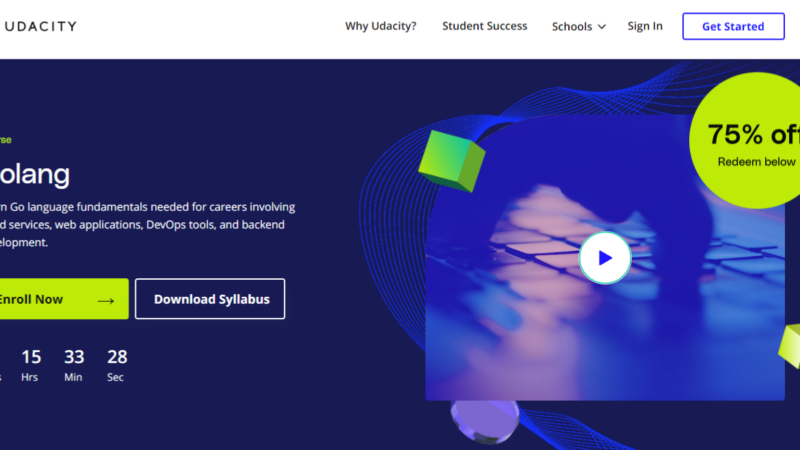Udacity Computer Vision Nanodegree Review

Technology has become a foundational element. It is used everyday to create more efficient ways of doing things, taking the entire world beyond its current horizons into the future. One part of computer science gaining a lot of momentum is machine learning, as companies across the globe convert to digital practices. Using the powers of machine learning, computer vision engineers have a unique way of reading and interpreting complex data structures including their movements and distances in space in comparison to surrounding objects.
This alternative perspective allows them to discover ground-breaking solutions for fields like defense, medicine, monitoring and manufacturing. Things like self-driving cars and precise navigations used in mapping apps and tracking are made possible thanks to those with computer vison skills and innovative out of the box thinking. This kind of knowledge base is highly sought after, especially by companies that are at the frontlines of todays technological battles. As one might guess, this is a career where a strong foundation is crucial, as it will need to hold the constant flood of new and updated information.
If any of this has piqued your interest and has your wheels turning about what a career in the field could mean for you, the Udacity Computer Vision Nanodegree could be a good fit for you. If you’ve never head of Udacity, a nanodegree, or the job title for that matter, we’re here with answers. In this review, we’ll look at the course and the academy, helping you to decide if it is a good option for you. We will end with a look at the job market and its predicted future based off of analysis and stats. First, we will look at a bit about the academy.
Udacity and Accreditation
Udacity has been around since 2012. It started off as a platform that included multiple introductory level computer science courses for enthusiastic learners. Its success would come as several powerful companies in the industry would hop on board, partnering with the academy to develop certification courses that equipped graduates with enough knowledge to land entry-level jobs.Now, as you can already tell, the academy has grown into a full-fledged academy where learners have options from the most basic knowledge to very advanced specified computer sciences concept sand techniques.
Apart from the knowledge needed to be a success in the field, each nanodegree offered by the academy comes with a few extras. It is their goal to help learners succeed in every way possible, perhaps the reason behind these nanodegree perks. These include:
- A Mentor
There for you in the wake of any kind of problem. Whether it be technological or something to do with the course, the mentors selected for you are dedicated to keeping you on track and motivated so that you have nothing that can possibly get in your way.
- Flexible Learning
While the academy offers an estimate of how long they believe the course will take you, you have all the time you need. You are able to save your place and login when you’d like, creating your own hours and schedule as you see fit.
- Real Industry Projects
Some of these courses are made in collaboration with top companies in the industry. They have provided the academy with projects and materials that mimic real problems and projects that these companies attempt to solve.
- Career Services
Included at the end of each certificate course is a spot in the Udacity database. This is a powerful tool that attempts to put graduates in contact with recruiters. To prepare graduates and current learners for the job-hunting process, there are mock interviews and help with resumes to get graduates ready and prepared for the big day.
Udacity Computer Vision Nanodegree Prerequisites
So, what do you need to begin? The prerequisites are pretty specific and include intermediate knowledge and familiarity with a number of programs and concepts including:
- Python and TensorFlow
- Statistics and probabilities
- Machine learning techniques
- Code written by others
- Nestled loops
Without these, you might not have the knowledge base necessary to grasp on to a few of the more complex ideals presented throughout the course. It could be a good idea to take a step back and build that knowledge before taking on the course to ensure your success.
Udacity Computer Vision Nanodegree Instructors
Besides the extras, Udacity attempts to stamp out the competition with their powerhouse team of instructors. We must admit, the staff is quite impressive, with years of experience and work with industry giants. For this course the instructors include:
Sebastian Thrun
He is not only the founder and president of Udacity but also founder of Google X. His work with Google would have him lead projects including self-driving cars and Google Glass.
Cezanne Camacho
Her list of educational accomplishments includes: Masters in Electrical Engineering, Researcher of Genomicsand Computer Vision expert. Her former experience researching combined with engineering skills would lead her to apply these machine learning technologies to enhance medical diagnostic applications.
Alexis Cook
Former research fellow with the National Science Foundation, Alexis has a masters in Computer Science with a sharp focus on applied mathematics.
Juan Delgado
Holder of a PhD in Biophysics, Juan has worked with NASA helping them to write software which, combined with machine learning, can analyze large amounts of data.
Udacity Computer Vision Nanodegree Course
Without further ado, let us get to the course. The entire course is broken down into three sections. Each of these is filled with information that builds up to a final application that learners will need to complete at the end of each section. The three sections and their contents are:
Intro to Computer Vision
From the get go you’ll work with image processing essentials. You’ll begin to see the powers that deep learning provides when combined with computer vision, beginning with image processing, extraction and import. At the end, you’ll work on a project involving facial keypoint detection.
Advanced Computer Vision and Deep Learning
In this section you will start to see how deep learning architectures are developed and how they come together to allow automatic image applications. From the knowledge gained dealing with CNN and RNN, at the end,you’ll work with automatic image captioning.
Object Tracking and Localization
In this section, you will see how to use technology to track and locate objects over time. These are the same techniques that those in the field use in creation of self-driving cars, drones, and navigation systems. This section will end with a hands-on project to create and optimize a tracking system that uses landmark detection.
The Time
We know you’re probably thinking, how long is all this going to take me? The truth is, the academy estimates a much shorter time than you may be thinking, 3 months to be exact. This estimate comes with the idea that you’re dedicating anywhere from 10 to 15 hours per week. As we mentioned above, you can take all the time you need, only needing to stick to certain deadlines for projects once you get to that section of the course.
An important note about the time it takes is that it directly affects the price of the course. This might change up your way of thinking and make you take your intensity and pace differently. We will talk more about the price and how it changes with the time it takes to complete the course in the section below.
Udacity Computer Vision Nanodegree Price
Udacity has a unique way of charging for the course. This is an attempt to make it affordable for more potential students, giving them a few options to choose from. These options include a monthly amount set at $399 per month. When you pay per month, you’ll be given full access for that period and charged again once one month has passed. The second option comes from the academy’s estimate, adding in a discount if in fact you pay for the full course estimated access up front. In the case of this course, that would come out to a little under $1200.
Currently, the site is running a promotion which comes with a free month no matter which way you pay. The bundle option is still cheaper in the long run, as it still comes with the 15% discount added in. When deciding which option would work best for you, it is best to take a look at your current schedule, deciding how much time you can dedicate to the course. Then, set a schedule that you can keep up with and give yourself a little ‘wiggle room’ just in case. Then, you can decide whether it would be more beneficial for you to take it month by month or go ahead with Udacity’s recommendation.
Udacity Computer Vision Nanodegree Reviews
A good way to find out about the good, the bad, and the ugly is to take a look at reviews. A lot of times, those with a problem or negative experience take to the web to give you a different perspective from what you might find on the site. So, that’s exactly what we did, searching for what learners had to say about their experience. What we found was an overall positive reaction to the course and the academy. Out of 5 total stars, the course has an average rating of 4.6. Here is what some learners had to say:
“It is difficult to follow the pace to achieve the program in three months, due to the current COVID circumstances: work, parenting a 1-year old kid and following the lessons/projects is very challenging. I wish I had more time to dedicate to the projects and courses, like the optional topics and tasks, but sadly it is not the case…” (5-stars) – Jose.
The Job Market
While a certification can be a great thing to have, it is more important what awaits you afterward. Lucky for you, this is a pretty attractive field that comes with projected job growth within the next few years. A recent analysis of the job market by study.com showed that the median salary fell around $118,370 for those with titles related to skills with computer vision. On top of that, the study predicted that a 19% rate of job growth would be visible during a 10-year span from 2016 to 2026.
Now is a good time to start gaining the knowledge necessary to break into the field, starting with an entry level job. A look into the job market by hired.com showed that the most popular areas hiring at the base level are in the United States, more specifically in Seattle and New York. Other areas include European countries that have also spiked in demand in the last few years, and are also predicted to show the same growth.
Final Thoughts
So, now you have seen the course from every angle, equipped with all of the most important things you need to know before making your final decision. When you sign up for a course created by Udacity, know that you’re getting quality across the board from the curriculum, to the instructors to the projects and more. Overall, those who have completed the course have positive things to say about it, with most of the complaints surrounded by the difficulty of the course.
If it is not for these reasons that you choose this as your course, then maybe it is due to the stability and growth that the job market is predicted to bring. There is a foreseeable spike in demand expected to come in large numbers especially with the evolving data systems that will require advanced techniques for optimization. Jumping in and starting to arm yourself with the proper set of skills needed to help conquer technological problems of today is the first step to breaking into the field and Udacity is a good option to start.





